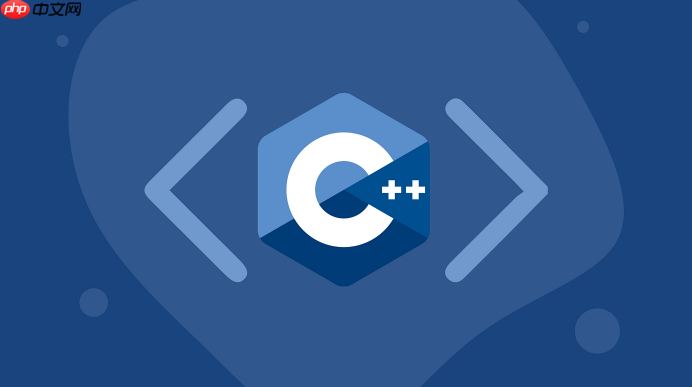根据数据类型和需求选择合适方法:1. 二进制方式适用于数值类型,效率高;2. 文本方式便于阅读和调试;3. JSON等序列化库支持复杂类型和跨平台;4. 自定义结构体可重载序列化逻辑。

在C++中,将std::vector的数据写入文件是一个常见需求。根据数据类型和使用场景,有多种方式可以实现。以下是几种常用且实用的方法。
如果std::vector存储的是基本数据类型(如int、double、float等),可以直接以二进制形式写入文件,效率高且保留原始数据结构。
示例代码:
#include <fstream>
#include <vector>
<p>std::vector<int> data = {1, 2, 3, 4, 5};
std::ofstream file("data.bin", std::ios::binary);
if (file.is_open()) {
file.write(reinterpret_cast<const char<em>>(data.data()), data.size() </em> sizeof(int));
file.close();
}</p>读取时也需用std::ios::binary模式,并确保目标vector大小正确或动态分配。
立即学习“C++免费学习笔记(深入)”;
若需要文件内容可读,比如用于调试或配置,可以逐个元素写入文本格式,用空格或换行分隔。
示例代码:
#include <fstream>
#include <vector>
<p>std::vector<double> data = {1.1, 2.2, 3.3, 4.4};
std::ofstream file("data.txt");
if (file.is_open()) {
for (const auto& val : data) {
file << val << "\n";
}
file.close();
}</p>这种方式生成的文件可以用记事本打开,便于查看和编辑。
对于复杂类型或跨平台兼容需求,推荐使用序列化方法。例如,用nlohmann/json库保存为JSON格式。
安装json库(通过vcpkg或直接包含头文件)后使用:
#include <fstream>
#include <vector>
#include <nlohmann/json.hpp>
<p>using json = nlohmann::json;
std::vector<int> data = {1, 2, 3, 4, 5};
json j = data;</p><p>std::ofstream file("data.json");
file << j.dump(4); // 格式化缩进4格
file.close();</p>这种方法通用性强,易于与其他语言交互。
如果vector中是自定义结构体,建议重载序列化逻辑。例如:
struct Point {
int x, y;
};
<p>std::vector<Point> points = {{1,2}, {3,4}};
std::ofstream file("points.dat", std::ios::binary);
for (const auto& p : points) {
file.write(reinterpret_cast<const char*>(&p), sizeof(Point));
}
file.close();</p>读取时按相同结构还原即可。
基本上就这些。选择哪种方式取决于你对性能、可读性和扩展性的要求。二进制快但不可读,文本简单直观,JSON灵活通用。根据实际项目需求选最合适的一种就行。
以上就是c++++怎么将std::vector的数据写入文件_c++保存vector数据到文件方法的详细内容,更多请关注php中文网其它相关文章!

c++怎么学习?c++怎么入门?c++在哪学?c++怎么学才快?不用担心,这里为大家提供了c++速学教程(入门到精通),有需要的小伙伴保存下载就能学习啦!

Copyright 2014-2025 https://www.php.cn/ All Rights Reserved | php.cn | 湘ICP备2023035733号